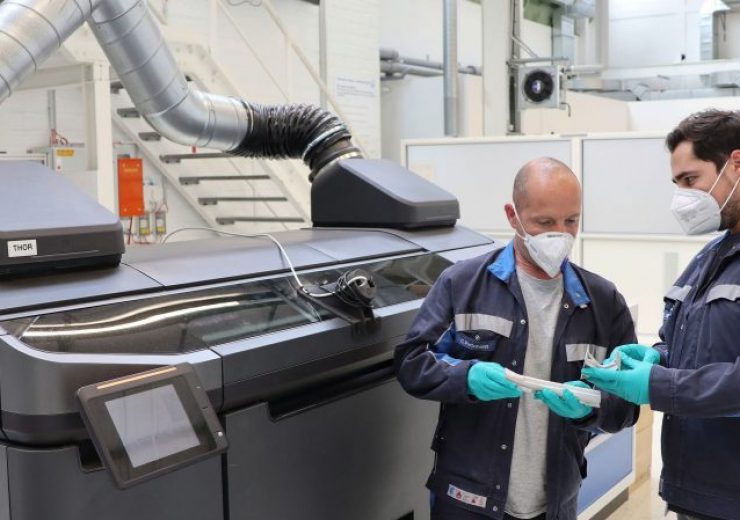HP is offering its high-tech printers for the process, while Siemens is providing a special software to the car manufacturer

Volkswagen employees checking the quality of structural parts produced using the new binder jetting process. (Credit: Volkswagen)
German automobile manufacturer Volkswagen said that it is moving ahead with the use of a new 3D printing process called binder jetting in car production.
The binder jetting process is being used by the company for manufacturing components, in partnership with Siemens and HP, at its main factory in Wolfsburg, Germany.
According to Volkswagen, the new process uses an adhesive unlike the conventional 3D printing process which uses a laser to build a component layer by layer from metallic powder.
The German firm said that using the binder jetting component brings down costs and boosts productivity. One of the reasons for this is that the weight of components is only half as much as those manufactured from sheet steel.
Volkswagen Brand board of management member Christian Vollmer, responsible for production and logistics, said: “Despite the ongoing challenges of the coronavirus pandemic, we’re continuing to work on innovation.
“Together with our partners, we aim to make 3D printing even more efficient in the years ahead and suitable for production-line use.”
Volkswagen revealed investing mid-double-digit million euros over the last five years to achieve innovation in the 3D printing process.
With Siemens, the car manufacturer has forged a software partnership and with printer manufacturer HP has widened its existing collaboration.
HP is providing Volkswagen the high-tech printers required for the process, while Siemens’ special software will be used for additive manufacturing.
The three companies plan to set up a joint expert team this summer at the 3D printing centre in Wolfsburg for enabling the manufacture of complex automotive components using 3D printing.
Volkswagen is targeting to produce up to 100,000 components by 2025 by using 3D printing at the Wolfsburg facility.
The company said that the first components manufactured by using the binder jetting process, which are for the A pillar of the T-Roc convertible, have been sent to Osnabrück for certification.
Earlier this year, Volkswagen entered into a partnership with BP to expedite the deployment of ultra-fast electric vehicle charging facilities in Europe.


